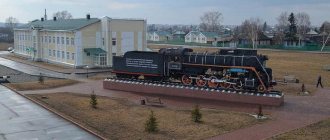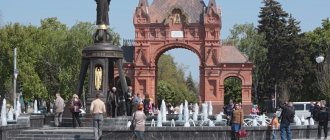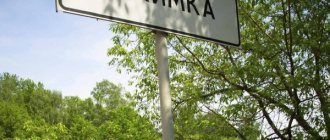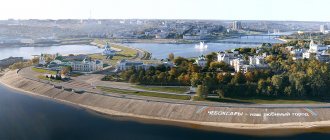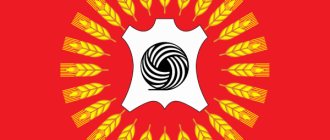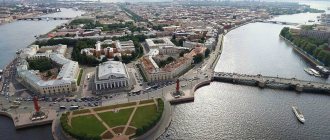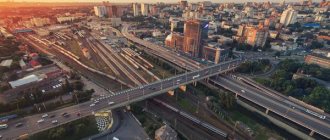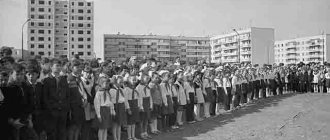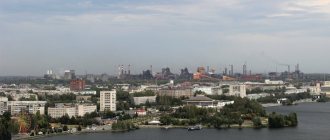For other uses, see Sestroretsk (disambiguation).
Place in Saint Petersburg, Russia
| Sestroretsk | |
| Flag Coat of arms | |
| Location of Sestroretsk | |
| Sestroretsk Location of Sestroretsk | |
| Coordinates: 60°6'N 29°58'E / 60.100°N 29.967°E / 60.100; 29.967 Coordinates: 60°6'N 29°58'E. / 60.100°N 29.967°E / 60.100; 29.967 | |
| A country | Russia |
| Federal subject | Saint Petersburg |
| Based | 1714 |
| Population | |
| • Evaluate (2018) [1] | 41 160 |
| Timezone | UTC+3 (MSK[2]) |
| Postal code [3] | 197701, 197704, 197706 |
| OKTMO ID | 40362000 |
Sestroretsk in St. Petersburg Sestroretsk station
Sestroretsk
(Russian: Sestroretsk, Finnish: Siestarjoki; Swedish: Systerbäck) is a municipal town in the Kurortny District of the federal city of Saint Petersburg, Russia, located on the shores of the Gulf of Finland, on the Sestra River and Sestroretskiy Lake 34 kilometers (21 mi) to the north. west of St. Petersburg. Population: 37,248 (2010 census); [4] 40,287 (2002 census);[5] 35,498 (1989 census); [6] 30,500 (1975).
Geography of Sestroretsk
Sestroretsk is a resort town on the shores of the Gulf of Finland with a population of 40 thousand people. It is located in the southern part of the Karelian Isthmus, 35 kilometers from St. Petersburg. The city is located between the Gulf of Finland and Lake Sestroretsky Razliv. These two bodies of water are connected by several rivulets and streams. Along the sea coast there is a ridge of sand dunes, wooded hills, beaches and small ponds.
Sestroretsk lies in a zone of transitional (from marine to continental) humid climate. The weather here is very changeable, which is explained by the proximity of the ocean and frequent changes in air masses.
The easiest way to get to Sestroretsk is by commuter train from St. Petersburg. Electric trains towards the resort town depart at intervals of one hour from the Finlyandsky Station. The road to Sestroretsk by car will take no more than 30 minutes if you drive along the Primorskoye Highway.
Below in the article you will find descriptions and photos of Sestroretsk attractions: beaches, ancient mansions, monuments, interesting natural and historical sites.
Links[edit]
- "26. The size of the permanent population of the Russian Federation by municipalities as of January 1, 2022". Federal State Statistics Service. Retrieved January 23, 2022.
- "On the Calculation of Time". Official Internet portal of legal information
. June 3, 2011. Retrieved January 19, 2022. - Post office. Information and computing center of OASU RPO. ( Post office
).
Search for postal service objects ( postal Search for objects
) (in Russian) - Russian Federal State Statistics Service (2011). “All-Russian Population Census 2010. Volume 1" [All-Russian Population Census 2010, vol. 1]. All-Russian Population Census 2010 [All-Russian Population Census 2010]
. Federal State Statistics Service. - ↑
Federal State Statistics Service of Russia (May 21, 2004).
“The population of Russia, the constituent entities of the Russian Federation as part of federal districts, urban settlements, settlements, settlements is 3 thousand or more people” [Population of Russia, its federal districts, federal constituent entities, districts, urban settlements, rural settlements - administrative centers and rural settlements with a population of more than 3,000 people] (XLS). All-Russian Population Census of 2002 [All-Russian Population Census of 2002]
. - “All-Union Population Census of 1989. The actual population of the union and autonomous republics, autonomous regions and districts, territories, effects, urban settlements and villages of Siestarjoki” (in Finnish). Project Runeberg. Pieni Tietosanakirja. Retrieved October 12, 2010.
- “Retro tram St. Petersburg classic: Biography of Fyodor Pirotsky” (in Russian). 2006. Archived from the original on July 4, 2007. Retrieved October 12, 2010.
- "Äänekosken kaupungin ystävyyskuntatoiminnan edistäminen" (in Norwegian). City of Jaanekoski. Archived from the original on July 19, 2012. Retrieved June 1, 2012.
History of Sestroretsk
The city of Sestroretsk was founded in 1714. Peter the Great took a liking to the local oak groves, and soon he ordered a modest country residence to be built here. All that remains of the royal estate is the Dubki landscape park. The landmark of Sestroretsk is located on a cape on the western outskirts of the city.
In 1721, a large arms factory was founded in Sestroretsk. The enterprise needed a dam. As a result of the construction of the latter, a large artificial lake was formed to the east of the city - Sestroretsky Razliv. At the end of the 19th century, a resort was opened in the city (partly to pay for the railway laid here in 1894). In subsequent years, a number of holiday and resort villages appeared near Sestroretsk.
In 1922, the Sestroretsk plant changed its specialization from weapons to tools. Machine tools, measuring devices and various tools begin to be produced here. At the beginning of this century, the plant ceased operations, and its territory began to be transformed into a recreational and tourist area. With the liquidation of the main city enterprise, Sestroretsk turned into a typical dacha and resort town.
Authorities
The representative body of local self-government - the municipal council - has been operating since September 28, 1997. As a result of the elections on September 14, 2014, a new composition of the 5th convocation was elected (out of 10 deputies: 9 from United Russia, 1 self-nominated).
- Head of the municipal formation - Chairman of the Municipal Council of the city of Sestroretsk - Andrey Vladimirovich Ivanov
- The head of the local administration of the municipality of the city of Sestroretsk is Tatyana Semyonovna Ovsyannikova.
- Deputies of the municipal council of the city of Sestroretsk - Anisimov Vladimir Nikolaevich, Babushkina Valentina Ivanovna, Vaimer Alexander Alexandrovich, Grechishnikov Ilya Alexandrovich, Dokish Yuri Mikhailovich, Zaborovsky Nikolai Nikolaevich, Kozyrev Yuri Yurievich, Matveev Vladimir Vitalievich.
Sestroretsk resort
The sea, sandy beaches, mud, clean air, saturated with pine aroma - these are the main healing factors of these places. They are effective in treating diseases of the respiratory and nervous system. The swimming season in Sestroretsk lasts from approximately mid-June to the end of August. The beaches of the resort, thanks to the flat seabed, are convenient for families with small children.
The Sestroretsk resort area stretches several kilometers north of the city itself. Its history began back in 1898. Today there are several sanatoriums operating here, the largest of which is the Sestroretsky Resort sanatorium.
The resort widely uses medicinal sapropel mud, which is extracted from a swamp near the shores of Lake Sestroretsky Razliv. Local mineral waters – radon and sodium chloride – are also used for drinking and healing baths.
Everyone who comes here on vacation or recreation sooner or later has a question: what to see in Sestroretsk? The attractions of the small town are, first of all, its ancient wooden mansions, sculptural monuments and unique historical objects. We will talk about them further.
Story
The territory of the city in the Stone Age
About 3000-3500 years ago, prehistoric man appeared at the mouth of the Sestra River. This is evidenced by archaeological finds in the bases of the dunes near the western shore of Lake Sestroretsky Razliv, first discovered in 1905. Now in this area, eleven sites of ancient man from the Neolithic (New Stone Age) have been found. The inventory of the sites is represented by tools made of quartz - arrowheads, scrapers for processing hides. There are many shards of ancient pottery decorated with pit-comb ornaments, characteristic of the Neolithic tribes who lived in the 3rd-2nd millennia BC throughout the forest belt of Eastern Europe. Next to the broken dishes, the remains of hearths (burnt stones and ash) are found. Scientists believe that these sites belonged to wandering communities of hunters. They did not know agriculture and did not have domestic animals.
Russo-Swedish wars
The coast of the Gulf of Finland has more than once become the object of military conflicts between the Russians and the Swedes. The first document that established the border in this region was the Treaty of Orekhovo in 1323, concluded by the Novgorod prince Yuri Daniilovich and the Norwegian-Swedish king Magnus. According to it, the border of the Novgorod Republic with the Kingdom of Sweden was established along the Sestra River. Contrary to the text of the document, this peace did not become “eternal”, and later, as a result of the Russian-Swedish war of 1614-1617, the Stolbovo Peace was concluded, according to which Russia was completely deprived of access to the Baltic Sea.
The first mention of the trading settlement-fair Systerbäck
) at the mouth of the Sestra River is found in the Swedish chronicles of 1643.
As a result of the Northern War, Peter I managed to recapture these lands, including the mouth of the Sestra River. Here in May 1703, Russian troops defeated the twelve thousandth army of the Swedish general Kroniort.
The emergence of the city
To gain a foothold on these lands, a harbor was built in 1706 near the mouth of the Sestra River. In 1710, an expedition was sent to these places with the goal of finding iron ores and drawing up a map of the area.
The new history begins with Peter I's visit to the Sestra River on September 20 (October 1), 1714. The Emperor ordered the construction of a summer palace on the shore of the Gulf of Finland, and a garden nearby. The palace was built in 1719-1724 from locally produced brick (it was later dismantled in 1781). About 2,000 young oak trees were planted near this palace. A few years later they decided to build a dam on the Sestra River. The dam began to be used for a different purpose, as the long Northern War created a need for increased weapons production. In June 1721, the construction of an arms factory began under the leadership of the commander of the Olonets factories, Colonel Wilhelm Gennin. In 1723, he was sent to Siberian factories, and work at the Sestroretsk arms factory was completed by Colonel Matvey Vyrubov. After the construction of the dam on the Sestra River, a vast reservoir was formed - Sestroretsky Razliv. On January 27 (February 7), 1724, the plant was opened. The plant provided the army with pistols, muskets and cannons, and also produced civilian items (hinges, door handles, copper buttons needed for uniforms), gratings for the Fontanka River, the Catherine Canal. The plant also operated 15 gunpowder workshops (in 1740, their equipment was transferred to the Okhtinsky gunpowder factories). Sestroretsk craftsmen made the famous “Papin’s car” based on the drawings of M.V. Lomonosov, as well as a silver shrine intended for the relics of Alexander Nevsky.
In 1721, simultaneously with the construction of the arms factory, a wooden Peter and Paul Church was erected on its territory; after the fire of 1730, it was rebuilt in another place.
In 1735, on the Dibun-swamp, near the Aspen Grove manor, the Chernorechensky iron foundry was built, smelting metal from local ore. He gave his first melt in the fall of the same year and continued to supply the Sestroretsk arms factory with raw materials for more than fifty years.
During the Russian-Swedish war of 1741-1743, fortifications were built in Sestroretsk. The earthen fortifications were renovated during the Crimean War of 1853-1856, and in June 1855 the city withstood bombardment by the Anglo-French fleet.
In 1809, the Grand Duchy of Finland was formed as part of the Russian Empire, and in 1811 the Vyborg province along with Sestroretsk was included in it, after which the border of Finland with the St. Petersburg province passed along the Sestra River.
In 1847, a horse-drawn railway line was laid from the Dubkovskaya pier on the coast of the Gulf of Finland to the Arms Factory. From June 1849 to September 1852, Ivan Ovsov and Dmitry Zubov, in agreement with the department of military settlements, built a highway from Dubkovskaya pier to the front entrance of the plant with a length of 1410 linear fathoms (about 3 km). On September 21 (October 3), 1853, as a result of a strong hurricane caused by waves of the Gulf of Finland, the road was destroyed.
By personal decree of Emperor Alexander II dated February 1 (13), 1864, the plant and the adjacent territory were separated from the Vyborg province and annexed to the St. Petersburg province. It was promised that in return Finland would be given “or the coastal strip near the Arctic Sea west of the river. Jacobs-Elf [means Vorem and then Pechenga], <…> or, according to proper allocation and assessment, free lands of the St. Petersburg province located along the border.” However, this did not happen; the borders of Finland remained unchanged until the revolution.
On July 15 (27), 1868, a major fire broke out, which destroyed about 800 houses and a cemetery. No more than 50 houses survived in the village.
On July 12 (24), 1871, in the city center (now Freedom Square), a new stone Peter and Paul Church was laid, built according to the design of the architect G.I. Karpov. Its solemn consecration was performed on June 9 (21), 1874 by Metropolitan Isidore (Nikolsky) of Novgorod, St. Petersburg and Finland.
Former grave of the railway builder and resort founder P. Avenarius
On November 2 (14), 1871, traffic opened on the Beloostrov-Sestroretsk railway line, 6 miles long. But due to unprofitability, from January 1 (13), 1886, traffic along it was completely stopped. At the end of the 1880s, the issue of building a horse-drawn railway from Staraya Derevnya along the existing dirt road was considered, but in the end it was decided to build a steam-powered road.
On July 23 (August 4), 1893, the first section of the new Primorskaya Railway was opened from Novaya Derevnya to Ozerki, on July 12 (24), 1894, the road was extended to Lakhta, on October 31 (November 12) of the same year - to Razdelnaya (now - Lisiy Nos station), and on November 26 (December 8) - to Sestroretsk.
In 1889, engineer Pyotr Aleksandrovich Avenarius became the chairman of the newly created Joint Stock Company of the Primorskaya Petersburg-Sestroretsk Railway. In the village of Tarkhovka, Avenarius is building an estate for better management of the joint-stock company and construction. In 1894 the road came into operation.
Prices for travel and luggage, as well as the need to maintain the pier in Lisiy Nos, made the company’s work unprofitable. For the purpose of economic development, P. A. Avenarius asked the government to allocate a plot of land on the shore of the Gulf of Finland at the mouth of the Sestra River for the construction of a Resort, which was in accordance with the charter of the society.
The city of Sestroretsk: description of attractions
To many, the city of Sestroretsk is known only as a resort. Few people know what interesting and historically significant objects are hidden within its boundaries and scattered throughout its immediate surroundings. To begin with, it is worth listing the most famous sights of Sestroretsk, Leningrad region. Among them:
- Petrovsky Arsenal.
- Dubki Park.
- Church of the Holy Apostles Peter and Paul.
- Monument to V. I. Lenin’s Hut.
- Saray N.A. Emelyanova.
- Sestroretsk border.
- Sestroretsk gazebo.
- Memorial complex "Sister".
- Mikhail Zoshchenko's grave.
- Monument to the first submarine.
- Klyachko's dacha.
- Wazhevskaya's mansion and others.
Thus, the sights of Sestroretsk amaze with their diversity. In this modest but amazing city, every tourist is sure to find something interesting.
Wooden dachas and mansions in Sestroretsk
The city has preserved dozens of beautiful dachas and mansions built of wood. All of them were built here at the end of the 19th – beginning of the 20th centuries.
Today, many of them are in disrepair, but still look chic and attractive. By the way, the main railway station of Sestroretsk is also built of wood.
The most outstanding monument of wooden architecture in the city can be considered the Klyachko dacha, built in 1908 according to the design of the architect S. Ginger. Building address: Lesnaya street, building 7. The building is distinguished by its bold forms, multi-level pointed roofs and textured balconies. Today the building is not empty - it houses one of the buildings of the Children's Dunes sanatorium.
Vazhevskaya's dacha is no less interesting architecturally. It is located on Andreeva Street, near the bus stop. The dacha was built in 1907 in Art Nouveau style. The building is protected by the state (at the regional level), but is in a state of disrepair.
Economy
Recreational institutions
There are 23 recreational service institutions in the city: sanatoriums “Sestroretsk”, “Sestroretsky Resort”, “White Nights”, “Dunes”, children’s sanatoriums (former pioneer camps) “Children’s Dunes”, “Young Signalman”, recreation centers “Alexandrovskaya”, “ Laguna", "Northwestern SGEM", military sanatorium "Tarkhovsky", tourist base "Razliv", rest house of the North-Western border district, hotel-sanatorium "Scandinavia", boarding house "Dunes", hotels "Retur", "Beloe and black”, “Time Out”, “Dunes” golf club, Yacht Club and others.
Industry and transport
There are several industrial enterprises in the city: Sestroretsk Automobile Plant, Bakery Factory, and the Salyut Garment Factory. The Sestroretsk Tool Plant, previously the central enterprise of the city, was closed in 2008.
Sestroretsk railway station
The city has a developed network of social buses (12 routes) and commercial minibuses (9 routes).
Suburban routes connect the city of Sestroretsk with St. Petersburg (metro stations Chernaya Rechka, Staraya Derevnya, Lenin Square, Parnas, Prospekt Prosveshcheniya, Grazhdanskiy Prospekt), Kronstadt, Zelenogorsk, settlements of the Kurortny district.
The railway line St. Petersburg (Finlyandsky Station) - Beloostrov passes through Sestroretsk. The city has one railway station - Sestroretsk, five railway platforms - Gorskaya, Aleksandrovskaya, Tarkhovka, Razliv and Kurort.
Trade and services
Today Sestroretsk is full of social and commercial infrastructure facilities. The city is being actively developed by large retail chains such as Pyaterochka, O'Key and others.
Included in the coverage area of all major cellular networks.
Sestroretsk gazebo
One of the iconic sights of Sestroretsk is a wooden openwork gazebo, which was built on Andreeva Street at the beginning of the twentieth century (the exact date of construction is unknown). For a long time it was and remains the main symbol of the resort town. The image of the gazebo can be found on many postcards and tourist brochures about Sestroretsk. According to some reports, the famous singer Fyodor Chaliapin once performed there.
Unfortunately, at the beginning of this century the gazebo was not in its best shape. The wooden structure was preserved, and its exact copy was recreated on Tokarev Street in 2008.
Monuments of Sestroretsk
The resort town is decorated with many interesting monuments and sculptures. Thus, the monuments to Peter the Great, the writer Mikhail Zoshchenko, and the famous Soviet football player Vsevolod Bobrov deserve special attention. In Peter the Great Park you can see a touching sculpture of a worker - a farewell greeting to the now closed Sestroretsk plant.
At the intersection of Tarkhovskaya Street and Primorskoye Highway there is an interesting monument to V.I. Lenin. What is its peculiarity? Here the leader of the world proletariat does not stand with his head held high, clutching his faithful companion, his cap, in his hand, but sits, hard at work on his book “State and Revolution.”
The monument to the first submarine can perhaps be called the main attraction of Sestroretsk for children. Although adults will also be interested in gawking at this unusual design. As you know, it was in Sestroretsk in 1721 that Efim Nikonov created the prototype of the first submarine. Outwardly, it resembled a wooden barrel with a periscope. Already in our time, an exact copy of this “engineering miracle” was installed near the Church of Peter and Paul.
Attractions
There are many beautiful, significant and interesting places in Sestroretsk. And I am very pleased that I went and saw them in person.
The first thing I saw was Lake Sestroretsky Razliv and the pier, which offers a wonderful view. I noted that many people take photographs here. The water surface of the lake is so calm, as if it is frozen in a moment in time and does not move at all. Only the ducks swim sedately near the pier, waiting for treats from guests and occasionally shouting to each other. The air is extraordinary, so fresh and cool that you can immediately feel autumn.
Monuments of Sestroretsk
A little to the left, across the road, I saw a bust unveiled in 2021. A handsome man looks with a confident gaze at Sestroretsk. This is a monument to the Russian gunsmith designer Sergei Ivanovich Mosin. Sergei Ivanovich came from a peasant family, graduated with honors from the Mikhailovsky Artillery School and went to serve in Tsarskoe Selo. Then he graduated from the Mikhailovsky Artillery Academy with a gold medal and was sent to the Tula Arms Plant, where he worked in leadership positions for 19 years, and then was transferred as chief to the Sestroretsk Arms Plant. Sergei Mosin's track record is extensive; at the time of his death he held the rank of major general.
Walking along the lake, I came to Peter the Great Square. Naturally, there is a bust of Peter I, the founder of Sestroretsk.
There is a very interesting place in the park called the Wind Rose. This is a small island that is considered an observation deck. The view from it is simply amazing!
There is a decorative structure installed on the observation deck and the atmosphere here is so romantic that you want to wrap yourself in a warm blanket and watch everything that happens around you, enjoying every moment.
If you go towards the highway, behind the administration building you can see the sculpture “Two Sisters”. The figures of two girls holding a basket of flowers are made of white marble. The size of the composition is quite large - the height of the figures is about three meters.
Sestroretsk Instrument Plant named after. S.P. Voskova is one of the oldest factories in the North-West. Its history begins in 1922, when the Sestroretsk arms factory, founded by decree of Peter I, changed its production profile from weapons to tools. The plant was named after the Russian revolutionary Semyon Petrovich Voskov.
In memory of the workers who worked in production, a monument was erected - a brick arch and a figure of a worker. The bas-relief depicts the capital letter “B” - “Voskov”. There is also a lathe nearby.
Now here is the St. Petersburg State Budgetary Professional Educational Institution “Sestroretsk Technological College named after S.I. Mosin." It was named in honor of the head of the Sestroretsk arms factory, about whom I wrote above, and its history began back then, during the existence of the plant, since on the initiative of Sergei Ivanovich, a school was created at the plant, where they taught people the craft and trained personnel for production.
Throughout my walk I observed the church. It was visible from any point on the route, so I decided to come closer and take a closer look.
My path passed through the "Officer's Bridge", which led me to the right place. And here I am. This majestic and beautiful church is the Temple of the Holy Apostles Peter and Paul. The site for the temple was consecrated back in 2002, but design and construction dragged on for 11 years.
The temple was built in memory of Russian submariners, since the “hidden ship” was tested here in 1721-1725.
Of course, there is also a monument to this “Hidden Vessel”. It is located next to the Temple. In my opinion, this is the most unusual attraction of the city of Sestroretsk.
Behind the church, right on the lake, there is a floating gazebo with a Jordan. Very beautiful, with a sky blue roof. Without further ado, see for yourself.
The next monument I came across is dedicated to the writer Mikhail Zoshchenko. A nobleman by birth, in his satirical stories he expressed his disapproval of ignorance, pride and other human vices. The writer was born in St. Petersburg and passed away in Sestroretsk, where he spent the last years of his life.
On the contrary, crossing the road, I saw many different sculptures and decided to come closer.
Here is the building of the central children's library, and next to it is a small recreation area and benches. All this is decorated with sculptures of gnomes. Interesting idea. The gnomes “settled” here in 2011 and there are seven of them in total.
On the way back, near the station, I saw another monument.
It was a monument to the football player Vsevolod Bobrov - a Soviet football player, hockey player, football and hockey coach. His family lived in Sestroretsk from 1925 to 1941.
Dubki Park
I left Dubki Park for last. There was little time left, but it was very interesting to see.
The symbol of the park, as you understand, is an acorn, which is repeatedly found in the park.
The park is very spacious, so you can walk around it for a long time. Yes, and there is something to see.
In summer, boats and catamarans are rented here. I think you need to visit this place again during this period and take a leisurely ride, admiring the beauty.
Also in the park I came across another monument to Peter I. This time it was not a bust, but a sculpture. It was done very well! Stately, strong, confident Peter seems to be looking around at his possessions and making far-reaching plans.
The park also has a place for children. It is called “Glade of Fairy Tales”. The clearing is quite large in area and contains colorful characters from Russian fairy tales and modern cartoons. The place where Emelya and Puss in Boots, Cheburashka and Gena, and Masha and the Bear settled together in harmony. In general, children should find it interesting.
I think there are still many unusual things you can find in the park. But, since there was little time, I had to run to the train.
Well, that's probably all. My express tour of this beautiful city is over. I advise you to set aside the whole day to explore and relax in this city.
There were a lot of photos, I’ll post them in the group in contact.
Beaches of Sestroretsk
No seaside resort can be imagined without beaches. There are plenty of them in Sestroretsk. These are Wonderful, Affectionate, Officer, Children's and other sandy beaches.
The most popular beach in the Sestroretsk resort area is called Laskovy. It is located north of the town itself. The beach is clean and well maintained, there are changing rooms, toilets, changing cabins and children's playgrounds. In addition, it offers a wonderful view of the Gulf of Finland.
Social sphere
Cultural and educational institutions
In Sestroretsk there are the Central Library named after M. M. Zoshchenko, the Central Children's Library, the Ostap Bender People's Literary Museum, the House of Culture of the city of Sestroretsk, and the House of Children's and Youth Creativity "On the Sister River".
Among the educational institutions: 6 secondary schools, gymnasium No. 433, 8 kindergartens and nurseries, Evening (shift) secondary school No. 669, Special (correctional) school No. 656, College of Economics and Management of the National Open Institute of Russia.
Healthcare
Currently, the following medical institutions operate in Sestroretsk: city hospital No. 40, clinic No. 68, children's clinic, sanatorium "Sestroretsky Resort", sanatorium "White Nights", sanatorium "Dunes", children's sanatorium "Children's Dunes", as well as a large number private medical institutions of various profiles.
Sport
The city has a general education boarding school for cycling "Olympic Reserve", a children's and youth sports school of the Olympic Reserve named after V. Korenkov, an equestrian base and golf club at the "Dunes" sanatorium, and an equestrian club "Dibuny".
The coastal features make Sestroretsk beaches very popular for kitesurfing.
Since 1998, the Sestroretsk Rally has been taking place, one of the stages of the Russian Championship. The route passes through the dacha areas of St. Petersburg. In 2016, the White Night trail took place in Sestroretsk for the first time. The competition route (distances 10 and 20 km) is laid along the edge of the Gulf of Finland.
"Petrovsky Arsenal"
The territory of the former Sestroretsk arms factory is now being actively reconstructed and transformed, gradually turning into a recreational area. In the near future, the Petrovsky Arsenal should become a popular attraction in Sestroretsk and the Leningrad region.
“Petrovsky Arsenal” is planned as a new cultural space for residents and guests of the city. Here, on an area of 14 hectares, there is already a summer cinema, football and volleyball courts, galleries and art objects, cafes, libraries and bicycle parking. During the reconstruction of the area, the buildings and historical layout of the old plant are preserved.
Park "Dubki"
Dubki Park, on the site of an old oak grove, is located a kilometer from the railway station and weapons factory. The object is included in the UNESCO protected zone and is one of the main attractions of Sestroretsk. At the beginning of the 18th century, it was here that the summer country residence of Peter the Great was organized.
Today it is a park area landscaped for recreation with attractions, cafes and tennis courts. All that remains of the former luxury of the royal residence in the park is a network of overgrown canals, which were once built here to drain the swampy area. The main alley of the park is decorated with centuries-old oak trees, and from its extreme point there is a magnificent view of the Gulf of Finland.
Emelyanov's barn
This nondescript wooden barn, preserved from pre-revolutionary times, is located on Emelyanova Street, 3. In the summer of 1917, this was the site of Vladimir Ilyich Lenin’s underground refuge. In the attic of this barn he hid from the police of the Russian Provisional Government, but then was forced to move to a hut on the shore of the Sestroretsk spill (later a monument was erected on the site of the hut).
In 1925, the building was turned into a museum. Previously, Nikolai Emelyanov’s barn was an important pilgrimage point for Soviet tourists. Endless lines of excursion buses pulled towards it both in summer and winter. Currently, the historical building is covered with a glass cover. The museum is open daily (except Wednesdays) from 11:00 to 19:00.
